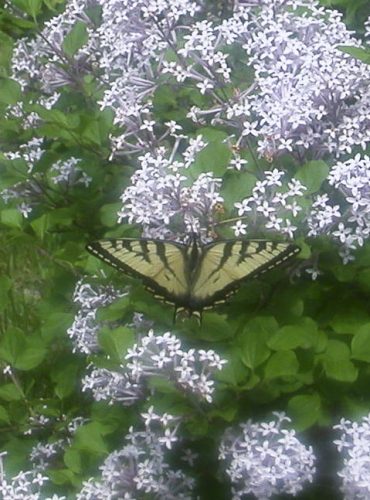I decided to revisit this 60s comedy that I barely remember from my childhood to see how it stands up today, from my viewpoint as a witch. I was alternately pleasantly surprised and predictably annoyed by what I found.
This series debuted in 1964, the year of Gerald Gardner’s death. It is worth remembering that witches were not only around, but public and accessible at the time this show was created. The average person was likely unaware of the existence of real witches, but Gardener’s nonfiction account of how witches practice, Witchcraft Today, was published in 1954 and went through many printings. Anyone writing about witchcraft could easily find contemporary source material if they looked for it.
Bewitched was of course designed to entertain a predominantly Christian audience. While the theme of witchcraft had been popular in film from The Wizard of Oz to Bell, Book and Candle, early television was cautious about the material it presented to the public. In many respects, a show portraying witchcraft in a sympathetic light was edgy the day it premiered.
Bewitched was conceived as a way of showcasing Elizabeth Montgomery’s talents as a comedic actress. The production company was stretching to find a creative concept that utilized Montgomery’s range and came up with the housewife-witch character as a way of pushing past the limitations of the early 60s serial comedy. Other characters were also created with specific actors in mind.
The hocus-pocus in Bewitched called for camera tricks that stretched film crews, set designers, actors, and directors. For example, actors would need to hold or re-create a pose so that objects could be moved around or switched. There were some bloopers, for sure, but overall the spells worked and suspension of disbelief was maintained. You could say that special effects grew up through magic.
But it was the characters of Bewitched that engaged viewers over the following decades, not the camera tricks, which difficult as they were to achieve in 1964 didn’t impress for long. I was curious to know how my impressions of the characters and the show itself would have changed since I tuned in regularly as a child.
It speaks to the deep divisions between witchcraft in corporate entertainment and witchcraft in real life that, despite coming from a family that believed in psychic prophecy, communication with the dead, and finding things underground with sticks, I did not as a child draw any comparisons between my own family and Samantha Stevens’s. The divisions were too great to invite critical scrutiny. Even today, as the product of a more middle-class witch training, I don’t see much of myself or my life reflected in this show. One thing this show did get right is how outlandish, bizarre, petty, dysfunctional, unpredictable, and wonderful witch families can be. By “witch family,” I mean both blood relations and the larger witch community. We are a strange breed, yet we are real people living in the real world.
Being witches gave the characters permission to be unconventional or downright unbalanced, and for relations between characters to go beyond stock sexism into true pathology. Samantha’s father is ridiculous and self-absorbed, and he can be downright nasty. Only the knowledge that her daughter would never forgive her keeps Samantha’s mother from turning Darrin permanently into a toad. You somehow expected Samantha’s parents to be divorced, although divorce was still considered not-normal at the time. Bewitched served as a bridge between the Beaver Cleaver type of family and the 70s sitcoms that dealt with serious family conflicts and social ills.
Here is my impression today of the characters.
Samantha Stevens: Loved her then, love her now. How can you not love a character played by Elizabeth Montgomery? For one thing, she’s beautiful even in the silly dated 60s hairstyles and clothing. Samantha is a caring, compassionate woman, yet everyone always pushes that compassion too far, and then – watch out! After all, she is a witch.
Darrin Stevens: The word “sexist” was not in many peoples’ vocabulary in the early 60s, but that’s the only word for Darrin’s behavior toward his wife and Samantha’s placating attitude toward him. That aside, Darrin is a straight-laced fuddy-duddy, overly concerned with how he appears to others. He is also nervous, overly stressed, and reactive. And he’s funny. I did not appreciate before how great Dick York was at neurotic buffoonery. The man was a genius.
Endora: Everybody’s favorite, played by the wonderful Agnes Moorehead. Samantha’s mother and the character who never lent more truth on more levels to the phrase “my mother-in-law is a real witch.” What I like about her today is that she is so unapologetic and comfortable with who she is, never pretending to think or feel differently than she does. She serves as a nice foil for Samantha, who is constantly trying to fit in. Darrin has to be a bit of a stick-in-the-mud for us to sympathize with Endora’s position. I never understood what Samantha saw in him either.
Gladys Kravitz: Here I have to admit that I feel a twinge of guilt, looking back at how I once laughed at this character. Now that fewer women are home during the day to report break-ins or notice that an old person hasn’t been out in public in a while, the neighborhood busybody has been proved to have a purpose. She is not an unmitigated nuisance. The constant gaslighting of Mrs. Kravitz is cruel: she really does see what she thinks she’s seeing.
Aunt Clara: Sweet Aunt Clara. Somebody take the keys to the broomstick away from this woman. She is so adorable that you can laugh at her befuddlement but not take pleasure in her pain. Still one of the most endearing sitcom characters ever.
Episode in the first season most ahead of its time: “It Shouldn’t Happen to a Dog.” A sexual harasser named Mr. Barker is turned into a little dog by a frustrated Samantha. Here sympathy is placed with Samantha as target of the harasser and woman who is not believed even by her husband. The discomfort of the harasser is fodder for comedy when the tables are turned on him. I was hoping they would neuter him when he got dropped off at the vet.
Most sexist episode: A few contenders for this honor. I disliked episodes such as “The Girl Reporter,” where women use subterfuge, tricks, and betrayal to try to steal Darrin away from Samantha. What do women see in this man? It’s never quite clear. We are supposed to assume that the world is swarming with girls so desperate for a man they’ll do anything. Samantha, you can have him.
My favorite episode: “The Witches are Out.” A society of elder female witches decide something has to be done about the negative stereotypic portrayal of witches at Halloween. They enlist Samantha’s help, but, unbeknownst to her, Darrin the advertising executive is about to launch a stereotypic Halloween ad campaign for a candy company.
Bewitched holds up well after all this time. Yes, it’s sexist; just don’t binge watch it. The best part about the series is that it constantly makes fun of us and the “mortals” around us. A witch has to be careful about taking herself too seriously.

















